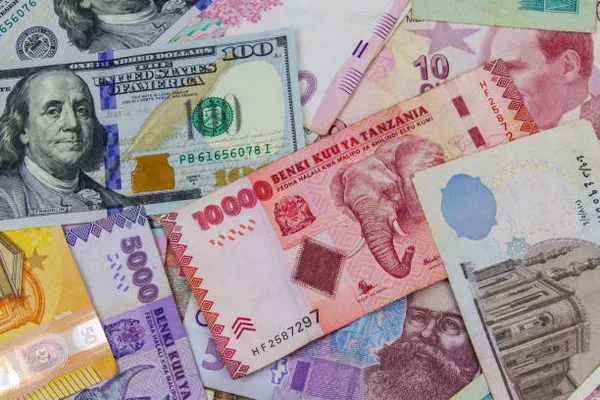Coins have long served as not only a medium of exchange but also a reflection of a nation’s history, culture, and technological progress. In the United Kingdom, coinage has evolved considerably over the centuries, with materials ranging from precious metals like gold and silver to more practical metals such as copper, nickel, and bronze. This article delves into the specifics of bronze coins in the UK, exploring their history, production, and current status.
Historical Context of Bronze Coinage
The use of bronze in coinage dates back to ancient times, but in the UK, its notable application began in the 19th century. Before the introduction of bronze, coins such as the penny were made of copper. However, due to the rising cost of copper and the need for more durable coinage, the UK Mint began experimenting with different alloys.
Transition from Copper to Bronze
In 1860, the UK made a significant shift in its coinage materials by introducing bronze for lower denomination coins. The bronze alloy used comprised 95% copper, 4% tin, and 1% zinc. This change was driven by practical and economic reasons, as bronze was more cost-effective and produced more durable coins than pure copper. The first bronze coins introduced included the penny, halfpenny, and farthing.
The Victorian Era and Beyond
The introduction of bronze coins coincided with the reign of Queen Victoria. These coins featured her portrait and marked a new era in UK coinage. The bronze penny, halfpenny, and farthing of this period are particularly notable for their intricate designs and robust composition.
Bronze Penny: The penny featured a portrait of Queen Victoria on the obverse and Britannia on the reverse. This design remained largely consistent until 1895, with minor modifications over the years.
Bronze Halfpenny: Similar in design to the penny, the halfpenny was smaller in size but maintained the same level of artistic detail and durability.
Bronze Farthing: The farthing, worth a quarter of a penny, was the smallest denomination. It also carried the image of Britannia on the reverse and saw various iterations during Queen Victoria’s reign.
Twentieth Century Developments
As the 20th century progressed, the UK saw further developments in its bronze coinage. The designs and compositions evolved, reflecting the changing times and monarchs.
Edward VII to George VI
Coins during the reigns of Edward VII (1901-1910) and George V (1910-1936) largely continued the Victorian tradition. The most significant changes during this period were in design and portraiture rather than in composition. The bronze penny, halfpenny, and farthing continued to be the mainstay of small denomination coinage.
The Impact of World Wars
The World Wars had a profound impact on all aspects of life, including coinage. During World War II, metal shortages prompted the UK Mint to reassess the materials used for coins. Despite these challenges, bronze remained in use for pennies, halfpennies, and farthings until the late 20th century.
Post-War to Decimalisation
After World War II, coins continued to be struck in bronze. However, the advent of decimalisation in 1971 marked a significant change. The UK transitioned from the old currency system of pounds, shillings, and pence to a simpler decimal system. During this transition, new coins were introduced, and some existing denominations were phased out.
Modern Era: The Shift Away from Bronze
The most notable change in recent times has been the phasing out of bronze in favor of more economical and durable materials.
The Decimalisation and New Coinage
With decimalisation, new coins such as the half penny (½p), penny (1p), and two pence (2p) were introduced. Initially, these coins were minted in bronze, maintaining the traditional alloy composition. However, as the years progressed, economic factors once again necessitated a change.
Introduction of Copper-Plated Steel
In 1992, the Royal Mint decided to replace the bronze penny and two pence coins with copper-plated steel versions. This decision was driven by the rising cost of copper and the need to reduce production costs. The new coins retained the same design and size but were distinctly different in their metallic composition.
Penny (1p): The modern penny features a design by Christopher Ironside, depicting a crowned portcullis with chains, an image derived from the badge of the Palace of Westminster.
Two Pence (2p): The two pence coin also designed by Ironside, showcases the Badge of the Prince of Wales: a plume of ostrich feathers within a coronet, above the German motto “Ich Dien” (I serve).
Collectible Bronze Coins
Although bronze coins are no longer in general circulation, they remain highly collectible. Coins from the Victorian era to the mid-20th century are particularly sought after by collectors. Their historical significance, coupled with the aesthetic appeal of their designs, makes them valuable additions to any collection.
Conclusion
Bronze coins have played a significant role in the history of UK coinage. From their introduction in the 19th century as a cost-effective alternative to pure copper, to their eventual replacement with modern materials, these coins reflect the economic and technological changes over the years. While bronze is no longer used in everyday UK coinage, its legacy endures through the collectible coins that continue to captivate numismatists and historians alike.
Understanding the journey of bronze coins in the UK provides a fascinating glimpse into the broader narrative of the nation’s history and development. As we move further into the 21st century, the story of these coins remains a testament to the enduring importance of practical innovation and cultural heritage in the world of currency.


